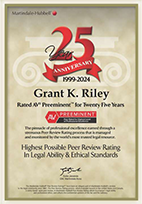On behalf of Riley | Ersoff LLP posted on Thursday, February 8, 2018.
Lead poisoning is the most studied environmental health threat in history. Elevated blood lead levels in children can cause permanent neurological, physiological and physiological harm in your child including loss of IQ, ADHD, aggression, juvenile delinquency, loss of executive function (the ability to multi-task), language delay, delayed puberty and delayed growth.
Lead poisoning is typically caused by deteriorated lead-based paint in rental housing built prior to 1978. Microscopic particles of lead dust and small paint chips can be ingested by a toddler by playing on the floor though normal hand-to-mouth activity. Any blood lead level above 3 mcg/dL is dangerous and can cause permanent, irreversible harm to your child.
What you can do to protect your children and your family
Lead poisoning from exposure to lead-based paint is 100 percent avoidable. The Residential Lead-Based Paint Hazard Reduction Act of 1992 requires all landlords to provide prospective tenants with a Lead Warning Statement and EPA pamphlet “Protect Your Family from Lead in Your Home.”The Lead Warning Statement will inform you whether the landlord has actual knowledge of lead-based paint at the property. The 1992 Act also requires every landlord to provide you with any reports she or he may have regarding any lead hazards at the property.
Importantly, the 1992 Act does NOT require landlords to test for lead-based paint. So, when you rent or buy an apartment or home, make sure you ask your landlord whether the property has ever been tested for lead-based paint. If you see peeling paint, insist that your landlord repair the paint using a lead certified contractor. Keep an eye out for peeling paint and be wary of old double-hung windows and doors that can create paint dust through wear and tear and friction. If you have any questions, please call.
The post How lead poisoning can affect your child appeared first on Riley | Ersoff LLP.
















